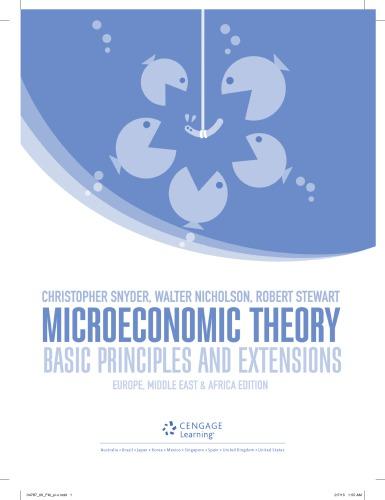17.6 Suppose refuse removal is a pure public good; that is, once it is produced, everyone beneits...
Question:
17.6 Suppose refuse removal is a pure public good;
that is, once it is produced, everyone beneits from it. What would be the optimal level of this activity if it could be produced at a constant marginal cost of €120 per unit?
If refuse removal were left to the private market, how much might be produced? Does your answer depend on what each person assumes the other will do?
If the government were to provide refuse removal services at the optimal level, how much will this cost? How should the tax bill for this amount be allocated between the individuals if they are to share it in proportion to beneits received from refuse removal?
Suppose the production possibility frontier for an economy that produces one public good (y) and one private good (x)
is given by x2 + 100y2 = 5000.
This economy is populated by 100 identical individuals, each with a utility function of the form utility = "xi y, where xi is the individual’s share of private good production
(= x/100). Notice that the public good is nonexclusive and that everyone benefits equally from its level of production.
a.
If the market for x and y were perfectly competitive, what levels of those goods would be produced? What would the typical individual’s utility be in this situation?
b.
What are the optimal production levels for x and y? What would the typical individual’s utility level be? How should consumption of good x be taxed to achieve this result? Hint: The numbers in this problem do not come out evenly, and some approximations should sufice.
Step by Step Answer:

Microeconomic Theory Basic Principles And Extensions
ISBN: 9781473729483
1st Edition
Authors: Christopher M Snyder, Walter Nicholson, Robert B Stewart






